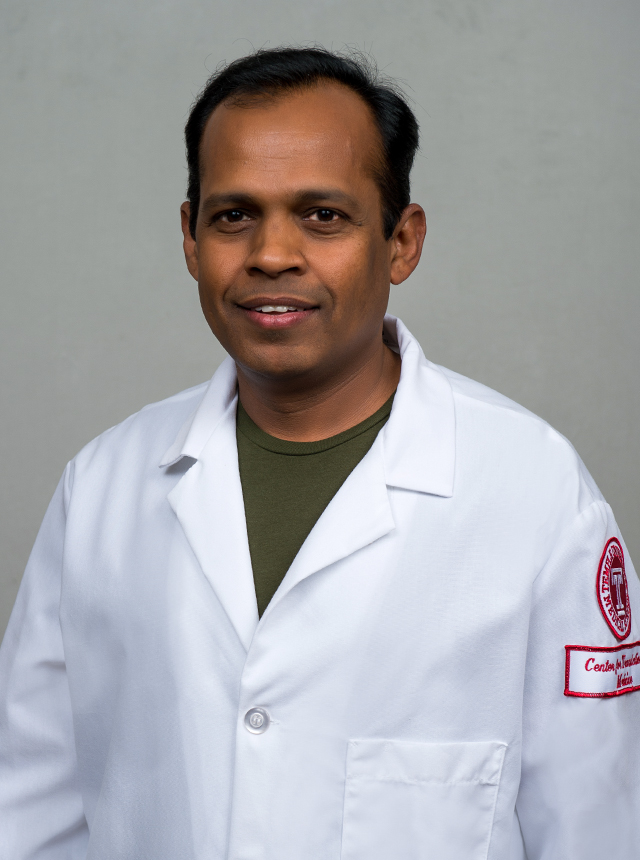Temple Researchers Discover Moonlighting Function for the Mitochondrial-Calcium Influx Machinery MCU Complex
 Mitochondria – the energy-generating powerhouses of cells – are also a site for oxidative stress and cellular calcium regulation. The latter two functions have long been suspected of being linked mechanistically, and now new research at the Lewis Katz School of Medicine at Temple University (LKSOM) shows precisely how, with the common connection centering on a protein complex known as the mitochondrial Ca2+ uniporter (MCU).
Mitochondria – the energy-generating powerhouses of cells – are also a site for oxidative stress and cellular calcium regulation. The latter two functions have long been suspected of being linked mechanistically, and now new research at the Lewis Katz School of Medicine at Temple University (LKSOM) shows precisely how, with the common connection centering on a protein complex known as the mitochondrial Ca2+ uniporter (MCU).
“MCU had been known for its part in driving mitochondrial calcium uptake for cellular energy production, which protects cells from bioenergetic crisis, and for its role in eliciting calcium overload-induced cell death,” explained senior investigator on the study, Muniswamy Madesh, PhD, Professor in the Department of Medical Genetics and Molecular Biochemistry and Center for Translational Medicine at LKSOM. “Now, we show that MCU has a functional role in both calcium regulation and the sensing of levels of reactive oxygen species (ROS) within mitochondria.”
The study, published online March 2 in the journal Molecular Cell, is the first to identify a direct role for MCU in mitochondrial ROS-sensing.
In previous work, Dr. Madesh and colleagues were the first to show how the MCU protein complex comes together to effect mitochondrial calcium uptake. “We know from that work, and from existing work in the field, that as calcium accumulates in mitochondria, the organelles generate increasing amounts of ROS,” Dr. Madesh said. “Mitochondria have a way of dealing with that ROS surge, and because of the relationship between mitochondrial calcium uptake and ROS production, we suspected ROS-targeting of MCU was involved in that process.”
In the new study, Dr. Madesh and colleagues employed advanced biochemical, cell biological, and superresolution imaging to examine MCU oxidation in the mitochondrion. Critically, they discovered that MCU contains several cysteine molecules in its amino acid structure, only one of which, Cys-97, is capable of undergoing an oxidation-induced reaction known as S-glutathionylation.
Structural analyses showed that oxidation-induced S-glutathionylation of Cys-97 triggers conformational changes within MCU. Those changes in turn regulate MCU activity during inflammation, hypoxia, and cardiac stimulation. They also appear to be relevant to cell survival – elimination of ROS-sensing via Cys-97 mutation resulted in persistent MCU channel activity and an increased rate of calcium-uptake, with cells eventually dying from calcium overload.
Importantly, Dr. Madesh and colleagues found that S-glutathionylation of Cys-97 is reversible. “Reversible oxidation is essential to the regulation of protein function,” Dr. Madesh explained. When switched on by oxidation, Cys-97 augments MCU channel activity that perpetuates cell death. Oxidation reverses when the threat has subsided.
The findings could have implications for the understanding of metabolic disorders and neurological and cardiovascular diseases. “Abnormalities in ion homeostasis are a central feature of metabolic disease,” Dr. Madesh said. “We plan next to explore the functional significance of ROS and MCU activity in a mouse model using genome editing technology, which should help us answer fundamental questions about MCU’s biological functions in mitochondrial ROS-sensing.”
Other researchers involved in the study include Zhiwei Dong, Santhanam Shanmughapriya, Dhanendra Tomar, Neeharika Nemani, Sarah L. Breves, Aparna Tripathi, Palaniappan Palaniappan, Massimo F. Riitano, Alison Worth, Ajay Seelam, Edmund Carvalho, Ramasamy Subbiah, Fabián Jaña, and Sudarsan Rajan, Department of Medical Genetics and Molecular Biochemistry and the Center for Translational Medicine at LKSOM; Jonathan Soboloff, Department of Medical Genetics and Molecular Biochemistry at LKSOM; Xueqian Zhang and Joseph Y. Cheung, Center for Translational Medicine at LKSOM; Naveed Siddiqui and Peter B. Stathopulos, Department of Physiology and Pharmacology, Western University, London, Ontario, Canada; Solomon Lynch and Jeffrey Caplan, Department of Biological Sciences, Delaware Biotechnology Institute, University of Delaware; Suresh K. Joseph, MitoCare Center, Department of Pathology, Anatomy and Cell Biology, Thomas Jefferson University, Philadelphia; Yizhi Peng and Zhiwei Dong, Institute of Burn Research, Southwest Hospital, Third Military Medical University, Chongqing, People’s Republic of China.
The research was supported in part by National Institutes of Health grants R01GM109882, R01HL086699, R01HL119306, 1S10RR027327, P01 DA037830, and RO1DK103558.
